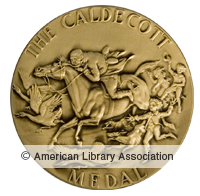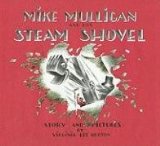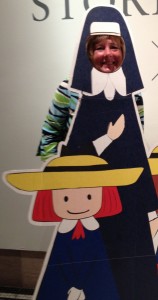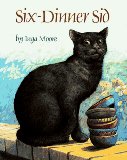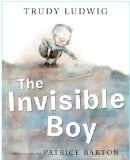Two Gems
A picture book is a small door to the enormous world of the visual arts, and they’re often the first art a young person sees. Tomie dePaola
 The crayons are back! Drew Daywalt brought young readers into the world of crayons when he brought them to life in his award winner, The Day the Crayons Quit. Children laughed out loud at the antics of the colors. Who can forget yellow crayon and orange crayon bickering over which is the true color of the sun and writing to their owner, Duncan, to complain? Daywalt once again teamed up with illustrator, Oliver Jeffers, in The Day the Crayons Came Home (Philomel). This time Duncan receives postcards in the mail from his crayons. Orange crayon and yellow crayon aren’t arguing anymore because they were left outside in the sun and they are melted together. They want to be rescued and brought home.
The crayons are back! Drew Daywalt brought young readers into the world of crayons when he brought them to life in his award winner, The Day the Crayons Quit. Children laughed out loud at the antics of the colors. Who can forget yellow crayon and orange crayon bickering over which is the true color of the sun and writing to their owner, Duncan, to complain? Daywalt once again teamed up with illustrator, Oliver Jeffers, in The Day the Crayons Came Home (Philomel). This time Duncan receives postcards in the mail from his crayons. Orange crayon and yellow crayon aren’t arguing anymore because they were left outside in the sun and they are melted together. They want to be rescued and brought home.
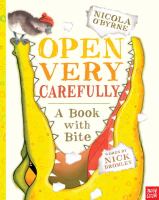 Another recent addition to our collection that features the use of a crayon is Open Very Carefully: A Book With Bite (Nosy Crow/Candlewick) by Nicola O’Byrne, illustrated by Nick Bromley. A crocodile intrudes on the story of The Ugly Duckling and starts eating the letters in the book. His favorite letters are O and S, and as he munches them, it becomes difficult to continue the story. The reader can get physically involved in the book by rocking and shaking the crocodile. This is great fun to share with our youngest readers. Older children who enjoyed Chester by Melanie Watts might also like to check these out.
Another recent addition to our collection that features the use of a crayon is Open Very Carefully: A Book With Bite (Nosy Crow/Candlewick) by Nicola O’Byrne, illustrated by Nick Bromley. A crocodile intrudes on the story of The Ugly Duckling and starts eating the letters in the book. His favorite letters are O and S, and as he munches them, it becomes difficult to continue the story. The reader can get physically involved in the book by rocking and shaking the crocodile. This is great fun to share with our youngest readers. Older children who enjoyed Chester by Melanie Watts might also like to check these out.



